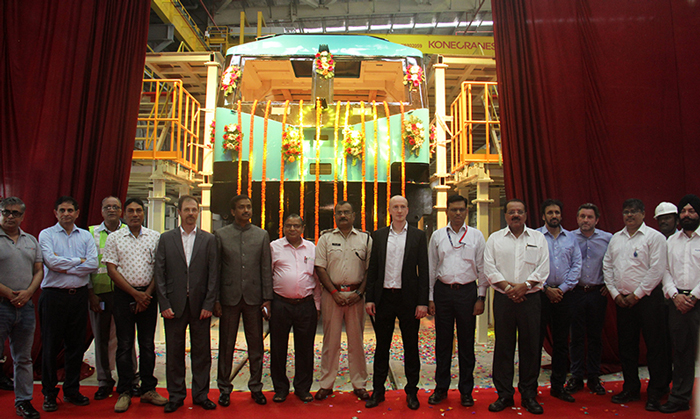Production at India’s first electric locomotive manufacturing facility commences
Posted: 13 October 2017 | Global Railway Review | No comments yet
Located at Madhepura, in the state of Bihar, India’s first electric locomotive manufacturing facility has commenced production by Alstom.


This facility, which is also Alstom’s first electric locomotive manufacturing facility in India, is set to transform the heavy freight transport landscape in the country. It will produce the Prima T8 (WAG12) locomotive, which is part of Alstom’s Prima range of locomotives and has been specially adapted for the Indian network.
The first two car body shells have already arrived at Madhepura and will soon be fitted and assembled at the plant.
The first locomotive will be ready for roll-out early next year. The first 5 locomotives by 2019 followed by 35 locomotives by 2020, 60 in 2021, and by 100 every year till the target of 800 is completed.
In order to make a difference in this market, we need local expertise, competitive manufacturing capacity and close relationships with our customers”
“The E-loco project is one of the most prestigious projects for Alstom worldwide and this feat, therefore, is a commendable achievement for the entire company,” said Jean-Francois Beaudoin, Senior Vice President Asia Pacific at Alstom. “The facility is a multimillion euro investment by Alstom and is a proof of our commitment to infrastructure development in India. In order to make a difference in this market, we need local expertise, competitive manufacturing capacity and close relationships with our customers. The commencement of production at the plant is a perfect testimony to our strategy to develop and grow a localised ecosystem to bring wide reaching benefits for railways and the community at large.”
The new facility, which is part of a joint venture between Alstom (74%) and Indian Railways (26%), is spread across 250 acres and currently employs 70 people, with plans to ramp it up at a rate of 25% every year till it reaches full capacity.
Related topics
Depots & Shunting Yards, Electrification & Cabling, Rolling Stock Maintenance, Rolling Stock Orders/Developments







